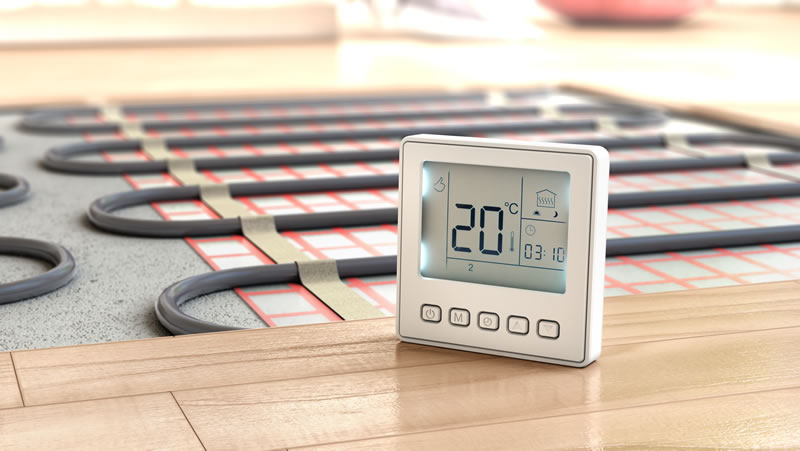Feasibility of installing underfloor heating in a lived in house
Article Date: 31 March 2023
In recent times people are becoming more savvy when it comes to energy efficient ways to heat their homes, striving for maximum comfort throughout, without breaking the bank. With a lot of people the benefits of underfloor heating probably does spring to mind with each, however they may be hesitant to go with this option if they are already living in the house. The idea of tearing up floors and disrupting daily life can be daunting, but with the right planning and execution, installing underfloor heating in a lived-in house is not only possible but can be a great investment for the long-term.
Primarily, it is important to consider the type of underfloor heating system that would be best for your home. Electric underfloor heating usually just consists of heat matts or pads and is easier to install. Water based underfloor heating is a bit more specialised and requires more time to installed but is far more efficient.
If you are looking to heat larger areas or your entire house, a water-based underfloor heating system may be the better choice. These systems consist of pipes that are installed under the floor and connected to a boiler or other heat source. Water-based systems are more efficient than electric systems because they can be connected to a renewable energy source, such as a ground source heat pump or solar panels. However, because water-based systems require plumbing and a connection to your home's heating system, they can be more disruptive to install.
Planning the underfloor heating installation process
Once you have determined the type of underfloor heating system that is best for your home, the next step is to plan the installation process. The key to successfully installing underfloor heating in a lived-in house is to minimise disruption and inconvenience as much as possible. This can be achieved by breaking the installation process down into smaller, manageable stages and planning around your daily routine.
Prepare the room for installers to work
Before the installation process begins, it is important to prepare the room by removing any furniture, carpets or other floor coverings, and clearing space for the installers to work. Once the room is ready, the installers will begin by removing the existing flooring and preparing the subfloor. This can be a noisy and dusty process, but measures can be taken to alleviate this, such as using dust sheets to protect other areas of the house and working during the day when noise is less likely to disturb neighbours.
Once the subfloor is prepared, the installers will lay the underfloor heating system and connect it to the thermostat and heating source. The exact installation process will depend on the type of underfloor heating system being installed, but in general, the pipes or electric mats will be laid out in a specific pattern to ensure even heating throughout the room.
Option to replace flooring or keep existing
After the underfloor heating system is installed, the flooring can be replaced. This can be a good opportunity to update your flooring, as many types of flooring, such as tiles and laminate, are well-suited to underfloor heating. Once the flooring is installed, the underfloor heating system can be connected to the heating source and tested to ensure it is working properly.
Benefits to make underfloor heating worth installing
Additionally, installing underfloor heating can add value to your home and make it more attractive to potential buyers if you decide to sell in the future.
Another benefit of underfloor heating is that it can save you money on your energy bills overall. While the upfront cost of installation may be higher than other heating options, underfloor heating is more energy-efficient and can reduce your heating costs by up to 25%. This is because underfloor heating systems use lower temperatures to heat a room, but the heat is distributed evenly throughout the space, eliminating cold spots and reducing the need for additional heating sources.
Furthermore, underfloor heating is a fantastic way to improve indoor air quality. Unlike traditional heating systems that circulate dust and allergens, underfloor heating systems do not create air currents, reducing the amount of dust and other particles in the air. This is particularly beneficial for people with allergies or respiratory conditions.
Conclusion
In conclusion, while the thought of installing underfloor heating in a lived-in house may seem daunting, it is entirely possible with the right planning and execution. By choosing the right type of underfloor heating system, working with experienced installers, and planning around your daily routine, you can minimise disruption and inconvenience and enjoy the benefits of a more comfortable and energy-efficient home. With the added benefits of cost savings and improved indoor air quality, underfloor heating is a smart investment for any homeowner looking to upgrade their heating system.

CONTACT US
For anymore information about this post or any of our services please use the short form below.


